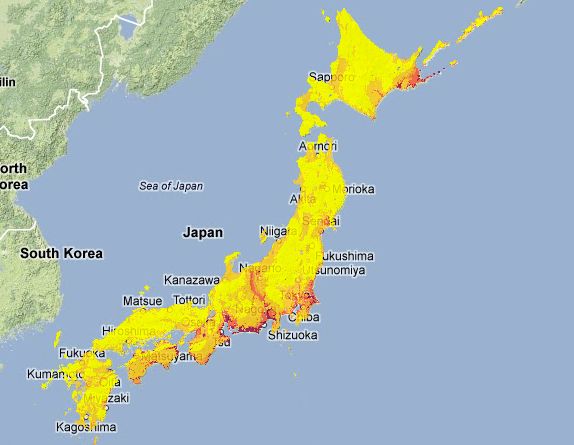
Where Will the Next Big Earthquakes Occur?

SALT LAKE CITY — The world's largest earthquakes are also the rarest ones, making it hard to predict these terrible temblors.
So seismologists are developing new ways to forecast the biggest earthquakes, like the massive, deadly magnitude-9 and greater quakes that have occurred in Japan, Sumatra, Chile and Alaska.
"There's an agreement that the prediction of individual earthquakes is not possible and probably will not be possible," said Gert Zöller, a mathematician at the University of Potsdam in Germany." The goal of our work is to [instead] make some statements about hazard: Here we have a region that is more dangerous, and here we have a region that is less dangerous."
Using a technique called probabilistic modeling, Zöller and his colleagues predicted that Japan's next giant earthquake is more likely to strike the island's northern regions, he reported April 19 at the Seismological Society of America's annual meeting.
Rather than relying on one data source, such as the historical record of earthquakes, probabilistic models incorporate many different kinds and sources of earthquake data.
"We try to collect many pieces of information and put this information in a mathematical framework to estimate probability," Zöller told OurAmazingPlanet.
Zöller reviewed earthquake data back to the year 684 and seismometer records dating back to 1923. From analyzing that data, he was able to determine the probability of an earthquake greater than magnitude 8 occurring along Japan's subduction zone in the next 30 years. A subduction zone is where two of Earth's tectonic plates collide and one slides beneath the other.
Sign up for the Live Science daily newsletter now
Get the world’s most fascinating discoveries delivered straight to your inbox.
In the Tohoku region of Japan, where 2011's massive earthquake ruptured, and northward, there is a relatively high probability of strong earthquakes. To the south, such as off the coast of the Tokai Nankai region, there is a relatively low probability of high-magnitude earthquakes, the researchers found.
The findings reverse the predictions of Japan's national seismic hazard map, which places the country's greatest earthquake hazard in the South. "Many people are claiming the next earthquake will be in the Tokai region, [but] our results say the northern part has higher probabilities for large earthquakes," Zöller said.
Part of this discrepancy could be due to the time scales used in the models, Zöller said. For instance, the map incorporates ground-shaking and includes short-term time scales, while Zöller's forecast is time-independent, he said.
But a separate, short-term study supports Zöller's conclusions. A forecast presented at the meeting April 19 by John Rundle of the University of California, Davis, estimated that Sendai and Tokyo — located in northern and central Japan, respectively — have the highest probability of a magnitude-7 earthquake occurring within one year. Kyoto has the lowest probability, which is consistent with Zöller's report, Rundle said.
Email Becky Oskin or follow her @beckyoskin. Follow us @OAPlanet, Facebook & Google+. Original article on LiveScience's OurAmazingPlanet.













